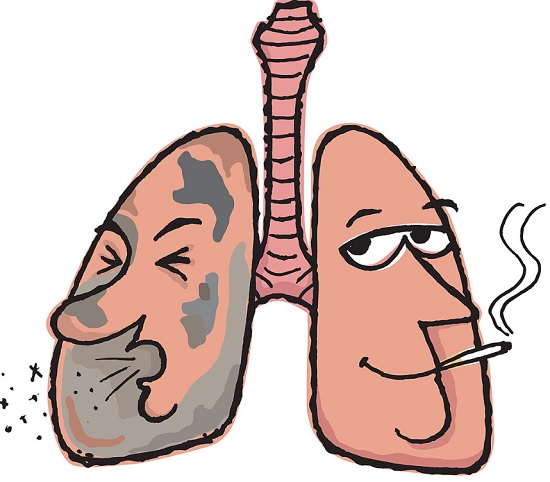Apr 20, 2024
Apr 20, 2024
Tobacco through the ages has been snuffed, chewed, and placed under the lips, but the most popular route of intake of nicotine is by smoking. Nicotine is a colorless, volatile and highly toxic liquid obtained from the leaves of the tobacco plant, Nicotiana tabacum. It acquires a brown color on standing. The chewable form like guthka, and pan masalas, and non-chewable forms like cigarettes, bidi, hookah, cigar, pipe, chillum, and phenie are all injurious to health.
Tobacco smoking is a major cause of morbidity and mortality in man. Death due to tobacco abuse is a man-made disaster. Almost 1.1 billion people of the world over (about one-third of the world's adult population) use tobacco in some form or the other. According to some estimates India has about 240 million tobacco consumers (194 million are men, and 46 million are women). India also has 5 million child smokers. Sadly, about 4 million people die every year due to tobacco abuse (Ref: Ltfestyle and Health by Dr. H.K. Chopra, Sterling Publishers, New Delhi, 2006).

The nicotine content of tobacco varies from 0.5 to 0.8 per cent, but the absolute amount may vary up to 12 times depending on the brand of tobacco used. A cigarette usually contains 2 per cent nicotine. The nicotine content of a “denicotinized cigarette” is about 1 per cent. About 80 per cent of nicotine is absorbed from the smoke inhaled. Whereas, only 10 to 25 per cent is absorbed if the smoke is only taken in the mouth and expelled.
One of the earliest ill effects of smoking is bronchitis (smoker's cough). In addition to nicotine numerous (4000 by-products) other compounds have been isolated from tobacco smoke. Some of them are polycyclic-hydrocarbons known as “tars” and are responsible for causing cancer in smokers. Nicotine also causes narrowing and hardening of the coronary arteries leading to angina, heart attacks, sudden cardiac death, premature stroke or paralysis. Narrowing of blood vessels to the extremities causes peripheral vascular diseases. In men smoking decreases the sperm count and impotence. Women smokers are 3 times more likely to become infertile and menopause may occur two years earlier than non-smokers.
The “tar” is a carcinogen and can produce cancer of lips, tongue, pharynx, larynx, food pipe, lungs, stomach, pancreas, liver and ovaries. Other toxic chemicals include arsenic, hydrogen cyanide, formaldehyde, cyanide, lead, hydrogen sulfide, and carbon monoxide. People who inhale the cigarette smoke are labelled as “active smokers”, and others who inhale the surrounding exhaled smoke are labelled as “passive smokers”, although they may be non-smokers. Passive smokers are also equally likely to suffer the same hazards as active smokers.
Tobacco addiction is characterized by physical and psychological changes. The addict suffers:
Loss of control over his actions;
Smoking becomes a compulsive preoccupation with him, and
He continues smoking despite all known negative consequences.
Cigarette smoking is contraindicated in angina pectoris, hypertension, coronay artery disease, intermittent claudication, and other vasospastic diseases.
Addiction Liability of Nicotine
Nicotine has an addiction liability 100 times more than cocaine. Factors which initiate the smoking habit include fashion, modernity, affluence, hospitality, friendship, peer pressure, and for relaxation and pleasure. When a person inhales cigarette smoke, it reaches the brain within six seconds. The desire to smoke specially in stressful circumstances can persist for years even after giving up smoking. One has to have a strong will power to quit smoking. Sadly, smokers feel that smoking is a “stress antidote”. This notion has to be given up if one really wants to give up the habit.
Types of Smokers
Passive Effect Smokers are those who smoke to get pleasure from manipulating the smoke in their mouth and blow ‘smoke rings’.
Negative Effect Smokers smoke in times of crisis and stress.
Addictive Smokers feel normal only after smoking.
Habitual Smokers are “chain smokers” who smoke without conscious awareness of the act.
How to Quit Smoking
Most people who want to quit smoking are unable to do it in their first attempt, and require about 6-7 attempts. Many medicines have been introduced to help smokers quit smoking.
Nicotine Replacement Therapy (NRT): In this a low dose of nicotine is given to the patient by mouth in the form of nicotine gum, lozenges, spray, or a nicotine skin patch.
Bupropion hydrochloride raises the level of the neurotransmitter dopamine in the brain which reduces the urge to smoke.
Clonidine essentially is a drug to treat high blood pressure. It has also been found to reduce the psychological craving in the smoker.
Varenincline: It is a non-nicotine agent developed to help smokers quit smoking. It reduces the craving to smoke by fooling the nicotine receptor.
Ideally, the regime to quit smoking has to be done under medical supervision. It requires specialized counselling, psychotherapy, social support in addition to NRT and drug therapy. However, the benefits are many and worth the while, as consumption of tobacco in any form has many dangerous health hazards which are avoidable.
Illustration (c) gettyimages.com
18-Sep-2016
More by : Dr. Frank S. K. Barar

|
Another cure would be world governments to ban manufacture and sale of smoking tobacco products. Is that a distant possibility? |